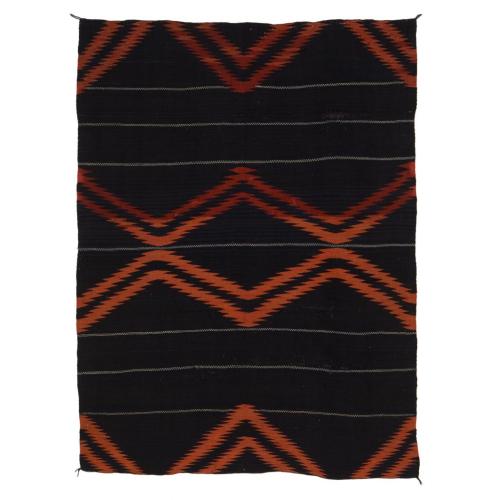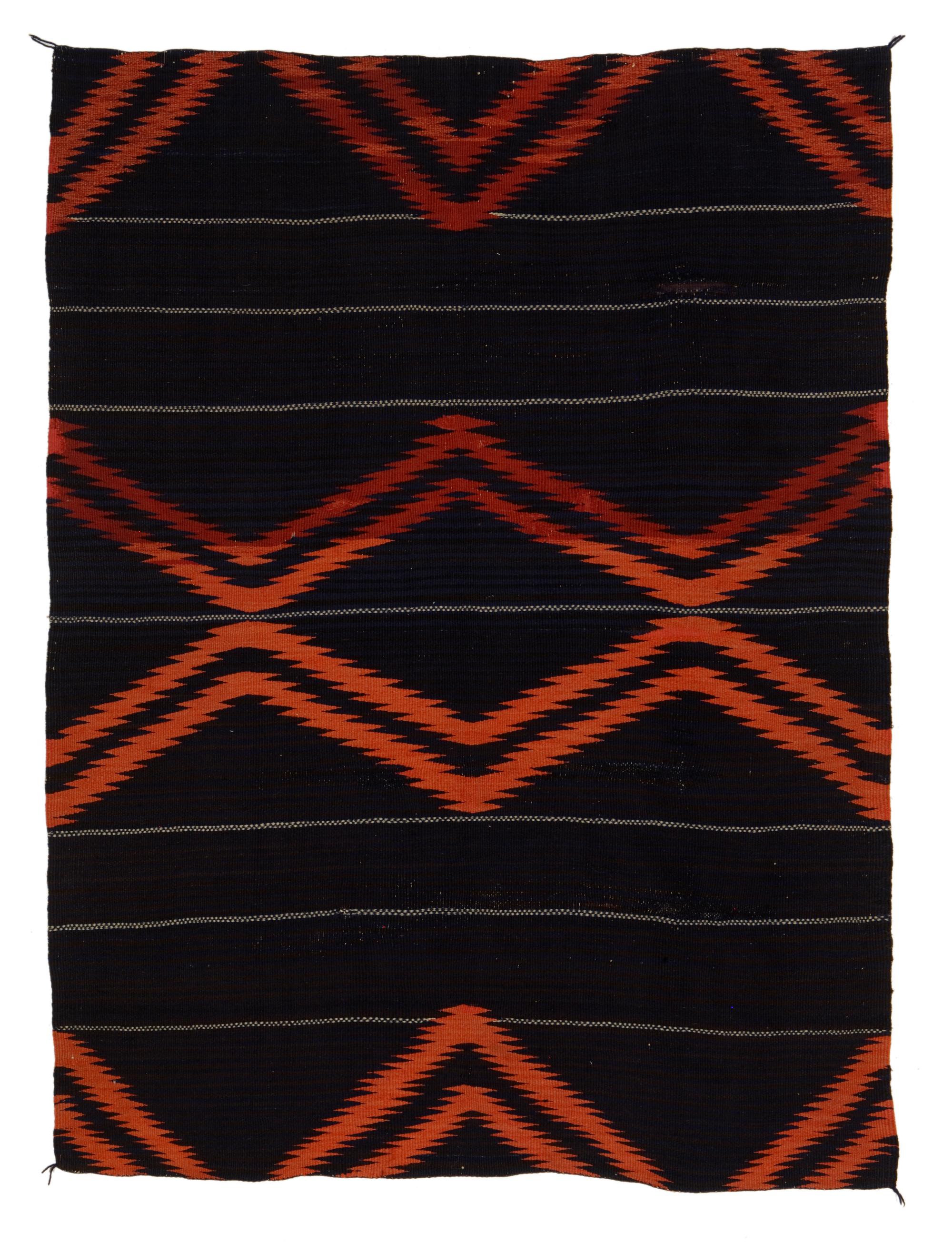
Photograph by Addison Doty. Copyright 2009 School for Advanced Research.
Blanket | Shocha
Date: 1870-1880
Artist or Maker: Unknown
Dimensions:
188 × 142 cm (74 × 55 7/8 in.)
Medium: wool | dyes
Credit Line: Courtesy of the School for Advanced Research. Gift of Amelia Elizabeth White, 1963.
Place Made:
Zuni Pueblo, McKinley County, New Mexico, Southwest, United States, North America
Object Number: IAF.T641
Not on view
Tribal Collection Review RemarksJim Enote and Octavius Seowtewa during collection review visit June 10 and 11, 2009 (Events Record “Collection Review: Zuni Tribe, Review 2”): This is a ceremonial textile called a “shocha” in the Zuni language. Shochas were woven by men in the kivas and worn by men specifically for use in ceremonies. For example, during Shalako, each koyemshi would wear a shocha. These textiles were kept for ceremonial use and were not items of everyday use or wear. They are usually loosely-woven plain weave textiles, quite different from the tighter twill weave of the ba’inne (manta/shawl) textiles; however, this example, while a plain weave, is more tightly woven than the other shochas in the IARC collection. The red diamond-shaped patterns on it remind Mr. Enote of cloud designs on pottery.
In a contemporary context, shochas are now used in the home, either stored or put on display. Today, commercially-made saddle blankets or Navajo-made rugs are often used in place of shochas. This piece should be considered ceremonial because it was made to be worn in a ceremonial context.
In Collection(s)
Bibliography:
Pueblo Indian Textiles
- Pg. 8; p. 42
- Fig. Plate 2; Fig 28
The Indian Arts Research Center, in collaboration with Native American community scholars, strives to present accurate collections records. Records may be updated as new information becomes available and is reviewed with the Native American community having cultural affinity to particular items. Please write to iarc@sarsf.org if you have questions or concerns related to the documentation.
